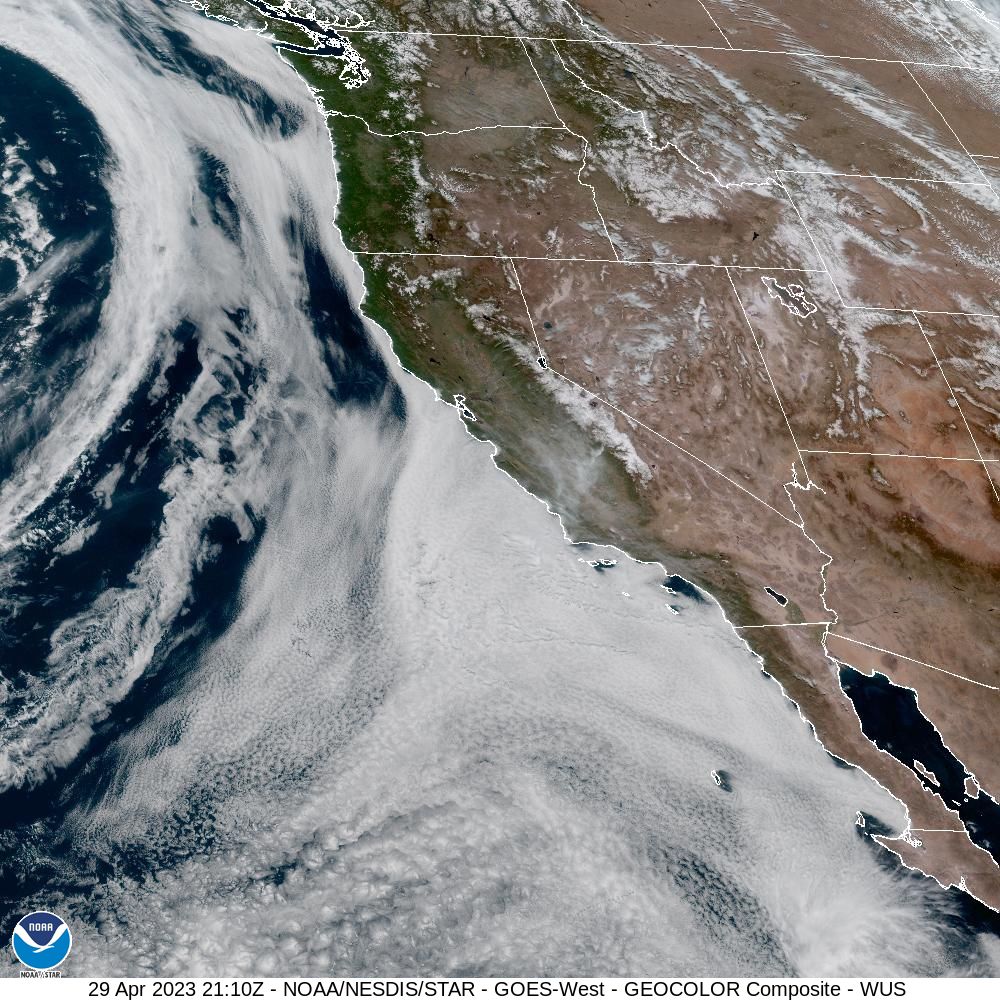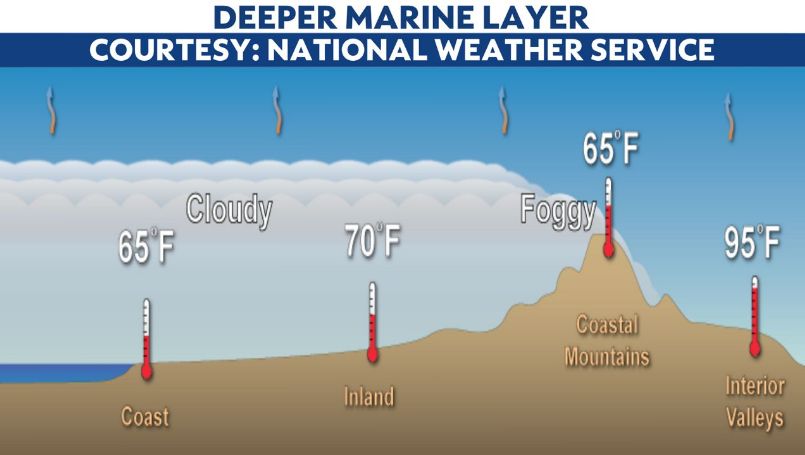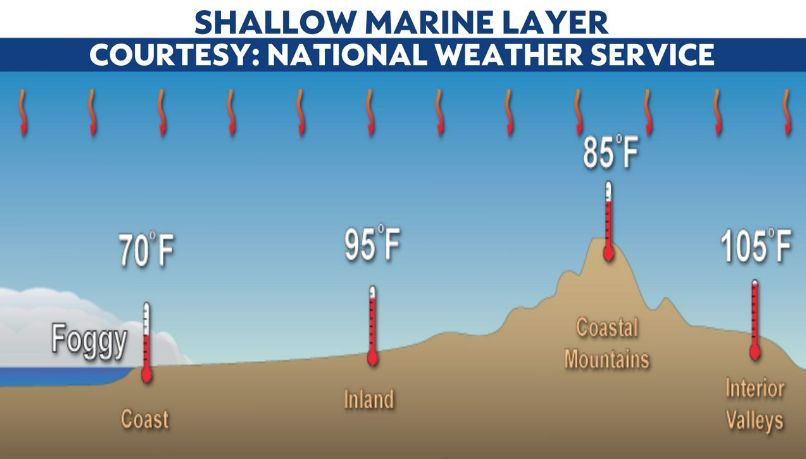Coastal California residents have a love-hate relationship with the cloud deck commonly referred to as the "marine layer". It also has the nicknames of "May Gray" and "June Gloom". Some people love it while others hate it.
The people who love it are fans of cooler cloudy weather (or people without air conditioners).
The marine layer keeps coastal California cool during the late spring and early summer months when inland cities are baking in the 90s and 100s. It is not uncommon for beaches to be in the 50s while inland valleys are pushing the century mark.
The people who hate the marine layer are sun worshipers and heat seekers. I can't tell you how many times I have heard about a planned day at the beach going sour because there was no sun.
I can also speak from experience! Sitting on the beach after a surf or swim with no sun or sweatshirt to warm you is not pleasant. In fact it can be teeth-chattering cold!
The marine layer needs a geographical and meteorological setup to form. Most places that experience the marine layer have a similar setup.
This setup consists of warm air, cold ocean current and a desert (or at the very least, a warm inland area).
The marine layer forms when warm, moist air passes over a cold body of water. In California’s case, this is the cold California Current. When warmer air passes over the colder water, it cools and condenses.
Scientifically speaking, warm air can hold more moisture than cold air. So when the warm air gets chilled (to the dew point temperature), it condenses water vapor into water droplets. Eventually this process forms the massive stratus cloud many people refer to as the marine layer.
In the image below you can see the marine layer cloud deck that extends from the coast of Baja California to the British Columbia coast.

In the image above, notice how the marine layer clouds are confined to the ocean and immediate coastline. The coastal mountain ranges prevent the clouds from pushing inland.
Plus, the marine layer can be as shallow as a hundred feet or as deep as 5,000 feet. The marine layer has a “cap” or inversion that prevents the air and/or clouds from rising.
Most of California mountains are between 6,000 and 9,000 feet tall. Mountains act as a wall, and marine layer clouds can’t climb over them.
Areas of low pressure deepen the marine layer. Deep marine layers can travel farther inland over the coastal plain and into the coastal mountain ranges.

High pressure tends to press down on the marine layer making it shallow. This is when the marine layer is confined to the immediate coastline.

During the overnight hours, when the ground is cooler and the sun isn't heating the lower levels of the atmosphere, the marine layer gets pushed inland against the foothills or mountains. This can be as far as 70 to 80 miles in southern California.
The temperature difference between the deserts of Southern California and the cool temperatures near the coast creates the winds that push the marine layer inland.
During the early morning hours the sun begins to heat the earth and lower levels of the atmosphere. When the air temperature warms, cloud droplets evaporate until the sun is shining. This is commonly referred to as "burning off" or "mixing out" the marine layer.
In the image above, notice how the marine layer clouds are confined to the ocean and immediate coastline. The coastal mountain ranges prevent the clouds from pushing inland.
Plus, the marine layer can be as shallow as a hundred feet or as deep as 5,000 feet. The marine layer has a “cap” or inversion that prevents the air and/or clouds from rising.
Most of California mountains are between 6,000 and 9,000 feet tall. Mountains act as a wall, and marine layer clouds can’t climb over them.
Areas of low pressure deepen the marine layer. Deep marine layers can travel farther inland over the coastal plain and into the coastal mountain ranges.
Our team of meteorologists dives deep into the science of weather and breaks down timely weather data and information. To view more weather and climate stories, check out our weather blogs section.



